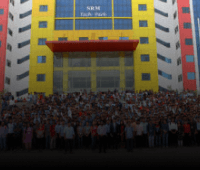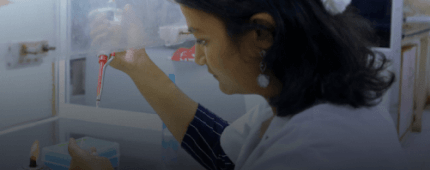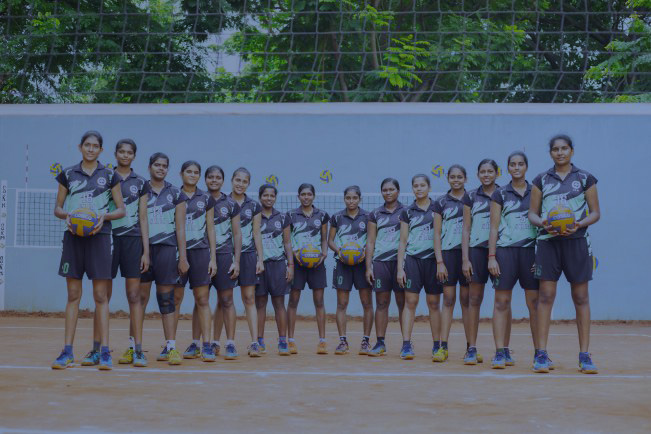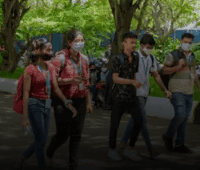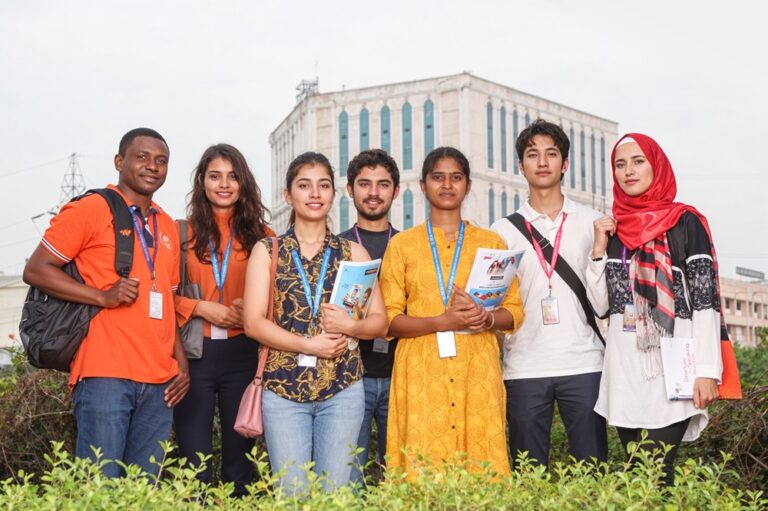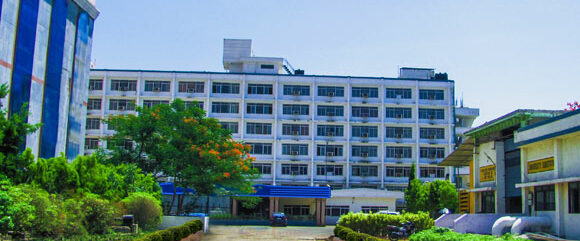Research & Development Cell
The National Education Policy (NEP) 2020 envisages the promotion of quality research within the Higher Education system.
The integration of Research, Innovation and Technology Development is the foundation of Atma-Nirbhar Bharat (Self-reliant India). The establishment of Research and Development Cell (RDC) in Higher Education Institutes will enable attainment of targets of Atma-Nirbhar Bharat and is expected to play a pivotal role in catalyzing multidisciplinary/ transdisciplinary and translational research culture mandated in NEP 2020.
Vision, Mission & Objectives
Vision
To put in place a robust mechanism for developing and strengthening the research ecosystem within HEIs, aligned with the provisions of NEP-2020.
Mission
- To create a conducive environment for enhanced research productivity.
- To encourage collaboration across industry, government, community- based organizations, and agencies at the local, national, and international levels.
- To facilitate greater access to research through mobilization of resources and funding.
Objectives
- To create an organizational structure with role-based functions of RDC, formulate Research Policy for the HEIs, identify thrust areas of research, and form related cluster groups/ frontline teams/consortia of researchers.
- To create enabling provisions in Research Policies for recruitment of research personnel, procurement of equipment, and financial management with adequate autonomy to the Principal Investigator(s) and disseminate research outcomes to stakeholders and the public at large.
- To establish a special purpose vehicle to promote researchers and innovators, identify potential collaborators from industry, research organizations, academic institutions & other stakeholders for cooperation and synergistic partnerships.
- To act as a liaison between researchers & relevant research funding agencies, extend guidance in preparation & submission of project proposals and post-sanctioning of the grants to oversee adherence to timelines.
- To have better coordination among other cells/centers dealing with University-Industry Inter Linkage, Incubation, Innovation and Entrepreneurship Development and Intellectual Property Rights (IPR).
- To develop an Institutional Research Information System for sharing the status of ongoing/ completed research projects/Programmes, expertise & resources, etc., making effective use of Information & Communication Technology (ICT) for preparing the database of in-house experts to provide industrial consultancy and services.
- To engage & utilize the services of superannuated active faculty/scientists in research capacity building of talented young minds and promote mobility of researchers across institutions and R&D Labs.
- To serve as nodal center for ideation and conceptualization of research topics/themes by organizing workshops and training programs and ensuring the integrity and ethical practices in research activities including clearance of bioethical committee wherever required.
Committee Members
- Dr. M. Navaneethan, Head, NRC – Chairman
- Dr. V. Thirumurugan, Associate Director [CL] – Member
- Mr. P. Ponnusamy, Asst. Registrar [Accounts ] – Member
- Ms. C. Lavanya, Manager [Accounts] – Member
- Ms. P. Jeevitha, Accounts Assistant, Office of Registrar – Member
- Ms. S. Gayathri, Junior Assistant, Office of Registrar (Technical Staff)– Member
Roles of the committee members:
Finance:
- RDC can facilitate resource mobilization and create a Corpus for research and development from government, industry, and other funding agencies and channelize Corporate Social 9 Responsibility (CSR) funds for sustenance and furtherance of research activities.
- Apart from creating a Corpus fund exclusively for R&D, RDC can explore venture capitalists and angel investors for funding in research and innovation. It needs to liaise with funding agencies, and track funding opportunities from industrial consortia.
- The HEI may make provision for research in the annual budget subject to the availability of funds.
- The corpus created for research could also support the seed funding for freshly recruited faculty for developing research facilities, publications, and patenting.
- Dr. T. V. Gopal, Dean[College of Engineering & Technology] – Chairman
- Dean[Research] / Ramapuram – Member
- Dr. A. Duraiswamy, Dean [College of Science & Humanities] – Member
- Dr. Nitin M Nagarkar, Dean [ College of Medical & Health Sciences] -Member
- Dr. Shivganesh Bhargava, Dean [College of Management] – Member
- Dr. Rajiv Janardhanan, Dean, Research[Medical]/ KTR – Member
- Dr. M. Cheralathan, Chairperson, [School of Mechanical] – Member
- Dr. V. Chitra, Dean, College of Pharmacy – Member
- Dr. E. Senthil Kumar. HoD, Physics & Nanotechnology – Member
- Dr. Jesu Arockiaraj, HoD, Biotechnology[S&H] – Member
- Dr. N. Selvamurugan, Research Prof., Biotechnology – Member
- Mr. S. V. Sridhar, Stenographer, E&T (Technical Staff) – Member
Roles of the committee members:
Research Guidance from RDC will aim to encourage faculties to conceive ideas through enhanced industry-academia interactions and prepare research proposals for funding from various agencies.
Organizing events like capacity-building programs (Research 8 Methodology and Research Techniques) and specific research theme-based workshops and Research Internships will motivate the end-users (students, scholars, and faculties) to participate actively in the process of ideation and innovative research in emerging areas.
Research Thrust and Clustered Areas
- Thrust areas for Research in an HEI should be identified, underpinning the societal needs and the availability of key resources, including in-house human resources, faculty research competencies, and support systems. This would enable HEI to consider establishing a Center of Excellence (CoE) in these identified contemporary areas of research.
- Research Clusters and/or Regional Research Consortia prompted/formed by RDC to bring all researchers, faculty, students, scholars, and Post-Doctoral Fellows for joint high value (interdisciplinary and trans-disciplinary) research projects to avail national and international funding opportunities. Shared infrastructure and expertise will enable crossfertilization of ideas and mobilization of resources.
- Further, forming Regional Research Consortia adds a synergistic advantage in finding solutions in inter-disciplinary, transdisciplinary, and multidisciplinary areas.
- CoEs’ can serve as Incubation Centres to transform innovative ideas into processes and products administered and monitored by the proposed RDC. RDC could also provide an avenue for community talent with prior learning/expertise to engage in research and innovation activities of HEI.
Research Incentives and Recognition
- Incentives play a significant role in triggering and catalyzing research interest among scholars and faculties. Incentivizing quality publications and patents by students and faculty will have an enduring positive impact.
- Institution of Excellence Awards for accomplishments/achievements in the form of impactful quality research and/ or research-based teaching will further stimulate and invigorate the research and innovation activities of the HEI.
- RDC should also develop a policy focussing on identifying specific incentives for research faculty and develop a unique Research Career ladder for strengthening the mission “Research”.
Capacity Building
- RDC would play a crucial role in building the capacity of faculty and students to undertake research problems in line with the latest advances in diverse disciplines to push the boundaries of knowledge through publications and contribute to technological developments relevant to societal needs.
- It would also pave the way for HEI to attract more research grants under norm-based funding, improve its accreditation ranking and enhance its brand image. Regular events such as refresher courses, workshops, trainings/internships, group discussions and seminars/conferences may be organized for capacity building.
- RDC would play a pivotal role in creating central R&D facilities with the provisioning of associated training/internship thereon.
- Dr. Revathi Venkataraman, Chairperson [School of computing] –Chairman
- Mr. Lakshmi Narasimhan, Director [IR] – Member
- Dr. Paromita Chakraborty, Head , REACH – Member
- Dr. M. Navaneethan, Head, NRC – Member
- Mr. P. Baskara Sethupathi, Asst. Professor, Automobile Engg. – Member
- Ms. S. Vincy Rani, Programmer, School of Computing(Technical Staff) – Member
Roles of the committee members:
- A vibrant research ecosystem in HEI aims to provide meaningful thrust for sustainable research and innovation and promote collaboration between government, universities, research institutes and industries.
- HEIs need to build a sustainable research ecosystem that leads to consistent quality research outcomes and enhanced productivity.
- In order to make RDC functionality viable, the HEIs that are relatively new or not so well established should develop a connection with RDCs of already well-known/established HEIs for their research. RDC in each HEI will act as a facilitator for networking and collaborative research with other national and international institutions working in inter- disciplinary, trans-disciplinary, and multidisciplinary research areas.
- Reformed administrative structure at HEIs can reach out to key industry players, research organizations, institutions, associations, NGOs, government bodies to forge strategic partnerships. HEIs need to establish collaborations, teams/consortia, partnerships, and combined ventures for joint research activities through clustering institutions and organizations to facilitate the exchange of students, scholars, and faculty.
- There is a need to strengthen resource sharing in content and infrastructure both within the university and among universities, funding agencies, industries, corporates and government.
- Dr. K. Vijayakumar, Chairperson [School of EEE] – Chairman
- Dr. R. Ananthakumar, Associate Director, DEI – Member
- Dr. R. C. Sathish Kumar, Coordinator [IIISM] –Member
- Dr. M. Jawaharlal, Dean[CAS] – Member
- Dr. K. Suresh Kumar, HoD, Mechanical Engineering – Member
- Dr. R. Sridhar, HoD, EEE – Member
- Dr. K. Kamalakkannan, HoD, Automobile Engineering – Member
- Dr. M. Prakash, HoD, Chemistry – Member
- Dr. E. Senthil Kumar. HoD, Physics & Nanotechnology – Member
- Dr. T. Muthuramalingam , HoD, Mechatronics – Member
- Dr. L. R. Ganapathy Subramanian, HoD, Aerospace Engineering – Member
- Dr. C. Bharatiraja, Professor, EEE – Member
- Dr. P. Malar, Research Professor, Physics & Nanotechnology – Member
- Dr. K. Ananthanarayanan, Research Associate Professor, Chemistry – Member
- Dr. J. Archana, Research Professor, Physics & Nanotechnology – Member
- Mr. Madan Kumar Lakshmanan, Sr. Scientist, CEERI(Scientific Officer) – Member
Roles of the committee members:
Research Monitoring
- The current policy environment in India encourages HEIs to be responsible and accountable for research development and innovation activities through the creation of infrastructure, generation of resources, promotion of business, and facilitation of policy framework to nurture the culture of quality research by adhering to ethical practices.
- Among the standard functions, the RDC in an HEI needs to monitor and oversee research progress, coordinate program, manage and facilitate optimizing resources, timely review of research activities for completion of the projects as per schedule.
- HEIs need to formulate and adhere to specific quality benchmarks for research to meet the global/ international standards.
- The proposed RDC should conduct a quality review (SWOC Analysis) or internal evaluation of the research papers and suggest Scopus Indexed, Web of Science (WoS), or UGC-CARE recognized journals for appropriate publications.
- R & D Cell of HEIs must ensure that all the Research Labs in the institution fulfill the norms of Good Laboratory Practices (GLP) and Safety (Bio and Chemical) measures, recognized as QIP center and by the National Accreditation Board of Laboratories (NABL).
Technology Development and Business Centred Facility
- The Technology Development and business-centered facility will be a hub for strategic partnerships/ collaborations, industry-institute interface, sponsored or contract research, new knowledge generation, IPR, and patent services, venture capital, trade/market portfolio, technology transfer, and commercialization of research to facilitate innovation, incubation, entrepreneurship and start-up ventures.
- Dr. Santhanu Patil, Director, DEI –Chairman
- Prof. P. Sree Sudha, Dean[Law] – Member
- Mr. K.C. Ravishankar, Law officer – Member
- Mr. Wordsworth Manivannan, Deputy Registrar – Member
- Dr. Melvin George, Professor, Clinical Pharmacology, MHS – Member
- Dr. N. Vivek, Dean, SRM Kattankulathur Dental College – Member
- Mr. J. Vijay Rathan Lingaa, Techno- Legal Advisor, DEI(Technical Staff) – Member
Roles of the committee members:
Integrity and Ethics
- Regular initiatives by RDC will ensure that researchers understand the importance of integrity and ethics and comply with ethical codes of research and publishing practices at institutional, national, and global levels.
- A standard plagiarism check should be mandatorily implemented and the requisite software in this regard made accessible to all researchers. In addition, the RDC will sensitize the research community about dubious research and publishing practices and predatory journals.
- Prof. B. Neppolian, Dean (Research) – Chairman
- Prof. Bhagavandas Head, Centre for Statistics – Member
- Dr. P. Rajendran, Librarian – Member
- Ms. Bhavani, Content writer cum Secretary, University Central Library – Member
Roles of the committee members:
Information Management System
- HEIs play a key role in the advancement of research and innovation as two distinct entities through Research Information Management System (RIMS) for the benefit of faculty, students, industry and other stakeholders.
- HEIs should put in place a RIMS to collect and manage research-oriented information, databases, publications, research projects, fellowships, collaborations, patents, thrust areas, innovations etc. aligned with the institution’s research policies.
- RIMS would also provide a platform for accessing resource-centric information pertaining to human capital (Expertise), physical capital (State- of-Art Research Laboratories and Sophisticated Instrumentation Facility), and knowledge capital (Digital Library & Information, Intellectual Property Facilitation, Quantitative Methods & Data Analysis, Analytical and Consultancy Services).
- As per the requirements of various regulatory agencies, researchers can submit, modify, or update their research compliances such as protocol approval, training records, equipment lists, etc. RIMS can provide a centralized and integrated database to manage issues related to and radioactive-safety approval clearances for use and disposal of biological, chemical and radioactive hazardous materials, protective equipment measures, surveillance of staff, appropriate trainings/workshops, etc.
- Each HEI needs to create a blog or portal for Institutional Research Information and Institutional Repository and sign an MoU with UGC- INFLIBNET to access and upload the research information through Shodh Ganga, Shodh Gangotri, Shodh Sindhu, Shodh Shuddhi, and Shodh Chakra.
- The Innovation Management (ISO 56002:2019) can be implemented as a common framework to develop and deploy innovation capabilities, evaluate performance, and achieve intended outcomes of global standards.


